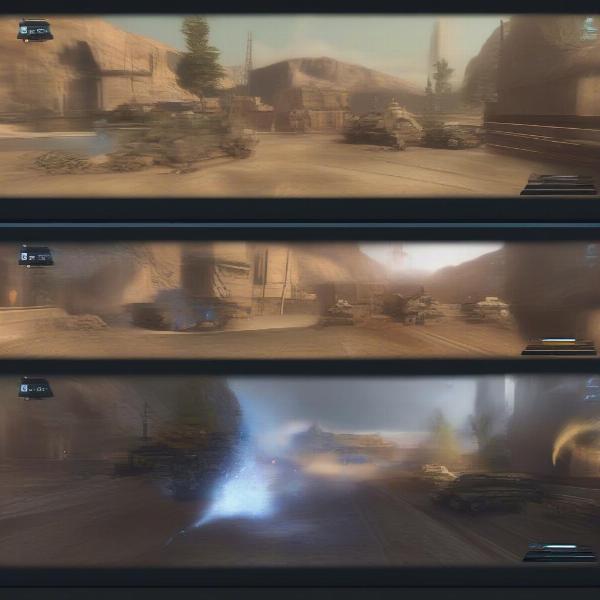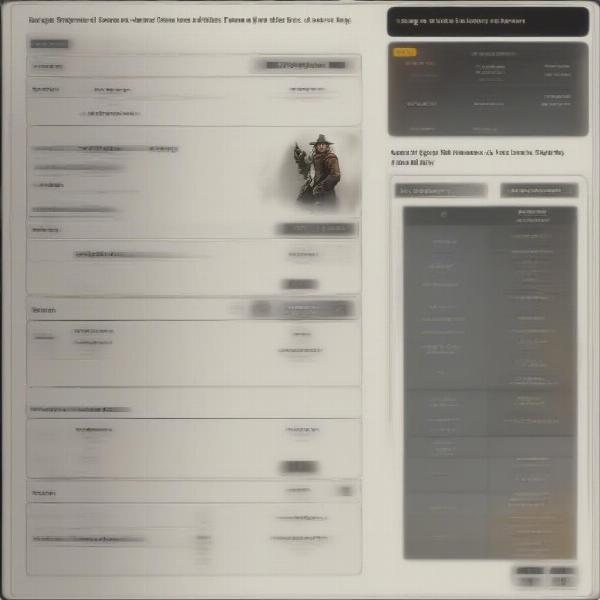Should You Limit Frames In Game? It’s a question that sparks debate among PC gamers. From competitive esports players to casual adventurers, everyone seems to have an opinion. This article dives deep into the intricacies of frame limiting, exploring the advantages, disadvantages, and ultimately helping you decide if capping your FPS is right for you.
Understanding Frame Rate and Frame Limiting
Before we delve into the “should you” question, let’s establish a clear understanding of what frame rate and frame limiting actually are. Frame rate, measured in frames per second (FPS), represents the number of images your graphics card generates and sends to your monitor each second. A higher FPS generally translates to smoother, more responsive gameplay. Frame limiting, on the other hand, is the act of capping your maximum FPS at a specific value.
Why Would You Want to Limit Frames in Game?
There are several compelling reasons why gamers choose to limit their frame rates, even with powerful hardware capable of pushing hundreds of FPS. Let’s explore some of the key benefits:
- Reduced System Strain: Consistently running at maximum FPS puts a heavy load on your GPU and CPU, generating excess heat and potentially shortening the lifespan of your components. Limiting frames reduces this strain, leading to lower temperatures and potentially quieter operation.
- Input Lag Reduction: In some cases, pushing extremely high frame rates can actually introduce input lag due to inconsistencies in frame delivery. Capping your FPS can help stabilize frame times, leading to a more responsive and predictable gaming experience.
- Screen Tearing Prevention: If your monitor’s refresh rate isn’t synchronized with your game’s frame rate (and you’re not using V-Sync), you might experience screen tearing – a visual artifact where the image appears to be split horizontally. Limiting your FPS to a value at or slightly below your monitor’s refresh rate can mitigate this issue.
- Consistent Performance: In graphically demanding games, your frame rate can fluctuate wildly. By capping your FPS, you create a more consistent experience, avoiding sudden drops that can be jarring and distracting.
- Power Saving: Lowering the workload on your system naturally leads to reduced power consumption. This can be especially beneficial for laptop users looking to extend battery life.
When Should You Limit Frames in Game?
While frame limiting offers several advantages, it’s not always the optimal solution. Here’s a breakdown of situations where limiting frames makes the most sense:
- Your FPS Exceeds Your Monitor’s Refresh Rate: If your monitor has a 60Hz refresh rate, and your game is running at 300 FPS, you’re not experiencing any visual benefit from those extra frames. In this scenario, limiting your FPS to 60 or slightly below can improve stability and reduce system strain.
- You Experience Screen Tearing: If screen tearing is a persistent issue, limiting your FPS can provide a noticeable improvement, especially if you prefer not to use V-Sync due to its potential input lag.
- Your System Overheats or Runs Loudly: If your hardware struggles to maintain high frame rates, resulting in excessive heat and fan noise, capping your FPS can create a more comfortable gaming environment.
 Frame Limiting Reduces System Strain
Frame Limiting Reduces System Strain
How to Limit Frames in Game
Most modern games offer built-in frame rate limiters within their graphics settings. Alternatively, you can utilize third-party software like RivaTuner Statistics Server (RTSS) for more granular control. Some graphics drivers also provide frame limiting options.
Is Frame Limiting Always the Answer?
Not necessarily. In competitive games where every millisecond counts, maximizing your frame rate can offer a slight edge. Higher FPS provides a smoother, more responsive feel, allowing you to react faster to in-game events. However, if you find that extremely high frame rates introduce input lag or instability, then limiting might be beneficial even in competitive scenarios.
 Competitive Gaming High FPS
Competitive Gaming High FPS
Finding the Right Balance
Ultimately, the decision of whether or not to limit your frames is a personal one. It depends on your hardware, your monitor, the games you play, and your individual preferences. Experiment with different settings to find the sweet spot that balances performance, visuals, and system stability.
Beyond Frame Limiting: Other Performance Tweaks
Frame limiting is just one piece of the performance puzzle. Consider these additional optimizations:
- Optimize Game Settings: Adjust graphics settings like resolution, shadows, and textures to achieve a balance between visual fidelity and performance.
- Update Drivers: Ensure your graphics drivers are up to date for optimal performance.
- Close Background Applications: Close unnecessary programs running in the background to free up system resources.
- Overclocking (With Caution): Overclocking your GPU or CPU can boost performance, but should be done carefully to avoid damaging your hardware.
 Optimizing Game Settings for Performance
Optimizing Game Settings for Performance
Conclusion
Should you limit frames in game? The answer depends on your individual setup and preferences. By understanding the advantages and disadvantages, you can make an informed decision that enhances your gaming experience. Experimentation is key – try different frame rate limits and observe the impact on performance, visuals, and system stability. Finding the right balance is crucial for enjoying your games to the fullest.
FAQ
-
Does frame limiting reduce input lag? In some cases, yes. Limiting frames can stabilize frame times, potentially reducing input lag caused by inconsistent frame delivery.
-
What is screen tearing? Screen tearing is a visual artifact that occurs when your game’s frame rate is not synchronized with your monitor’s refresh rate, causing the image to appear split horizontally.
-
How do I limit frames in game? Many games offer built-in frame limiters in their graphics settings. You can also use third-party software like RivaTuner Statistics Server (RTSS).
-
Is V-Sync a good alternative to frame limiting? V-Sync can eliminate screen tearing, but it can also introduce input lag.
-
Should I limit frames in competitive games? Maximizing frame rate can be advantageous in competitive games, but if it causes instability or input lag, limiting might be preferable.
-
Will limiting frames damage my hardware? No, frame limiting actually reduces strain on your hardware and can potentially prolong its lifespan.
-
How do I find the optimal frame rate limit for my system? Experiment with different values to find the sweet spot that balances performance, visuals, and stability.

